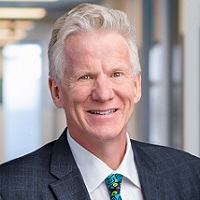 By Nick van Terheyden aka Dr Nick, Principal, ECG Management Consulting
By Nick van Terheyden aka Dr Nick, Principal, ECG Management Consulting
Twitter: @drnic1
Host of Healthcare Upside Down – #HCupsidedown
I’ve always been fascinated with the process of flying. I’ve even been lucky to have a few lessons in both fixed wings and rotary—that’s planes and helicopters to you civilians—and in another life plan on coming back as a pilot.
The experience is interesting, especially as you first learn to fly. There’s a lot going on, and managing a multitude of different inputs is overwhelming—especially in helicopters. So much so that in my first lesson in a chopper, I found I had muscle aches all over my upper body. And that’s strange, since there’s no muscle work necessary in flying. When I discussed it later with my instructor, he explained it was all a result of my stress and how tightly I was holding the controls. I quickly learned about the trim wheels, flap controls, and stability augmentation systems—tools to help reduce the amount of work necessary to maintain steady flight. There was some psychology as well: letting the tools to do their job made a big difference. In essence, relaxing a little.
Episode NOW on Demand
Healthcare bears many similarities. The experience of any patient stepping into the system for the first time can be overwhelming, and this is true even for people who work in the system. It starts with access and scheduling and continues throughout the healthcare journey.
But as we have found in other parts of our lives, there are capabilities to improve this process. Booking a table at a restaurant can be done using online tools. You can find the available restaurant, pick a time, and make a quick and friction-free decision. Interact with a healthcare system and you will struggle to find that level of convenience.
“The fax machine was invented in the mid-19th century,” notes Jeff Gartland, CEO of Relatient. “ (It) is still literally the number one communication device in healthcare.”
Jeff recently conducted a patient engagement survey with MGMA and found, among other things, that patients are fed up with the scheduling process in healthcare. He joins me on this episode to discuss his findings and explain how removing barriers to appointment scheduling can allow the patient-provider relationship to flourish.
What he learned through the survey.
“There’s a couple of pieces that really were quite fascinating. One is how we as individuals engage with the provider on the consumer side—How do I schedule? How do I pay? How do I communicate? How do I interact with the practice before and after my appointment? Those consumer elements are intertwined with the medical elements. So it’s no longer just whether you’re able to cure my ailment or help me with a particular condition or disease. It’s all of these other consumer experiences that are very much a part of how I would rate you. I think that’s a really important element for us to get our head wrapped around, because that ripples through how we think about our healthcare processes, how we staff up, how we drive our digital experiences.”
Outgoing communication to patients isn’t enough.
“We’ve done a fantastic job in healthcare of creating one-way communications. Everything from appointment reminders through pre- and post-visit educational materials, and so forth. What we haven’t done is actually create a digital experience for bidirectional communication. So if I get an appointment reminder and I need to reschedule, or I’m not sure which forms I need to fill out, my recourse is back to the phone. That does not allow me to effectively engage in a digital fashion.”
Learning to relax.
“One of the key things is not always asking for insurance right up front. Now, do you need insurance at some point along the way? Absolutely. There are areas where you can capture that data down the line. But putting that right at the very beginning tends to be one of the big friction points of not allowing for the consumer experience to flourish. We often joke about how everybody wants ‘Open Table’ for healthcare. And the nice thing about Open Table is that you can go and pick a time really quickly; they don’t ask all of these different types of triage questions that prevent you from getting into that time slot. They don’t ask whether you’ve been to that restaurant before or what you ordered last time. They don’t ask for all of these things that prevent you from getting to the times quickly.”
About the Show
The US spends more on healthcare per capita than any other country on the planet. So why don’t we have superior outcomes? Why haven’t the principles of capitalism prevailed? And why do American consumers have so much trouble accessing and paying for healthcare? Dive into these and other issues on Healthcare Upside/Down with ECG principal Dr. Nick van Terheyden and guest panelists as they discuss the upsides and downsides of healthcare in the US, and how to make the system work for everyone. Join the conversation on Twitter at #HCupsidedown.
This article was originally published on the ECG Management Consulting blog and is republished here with permission.
